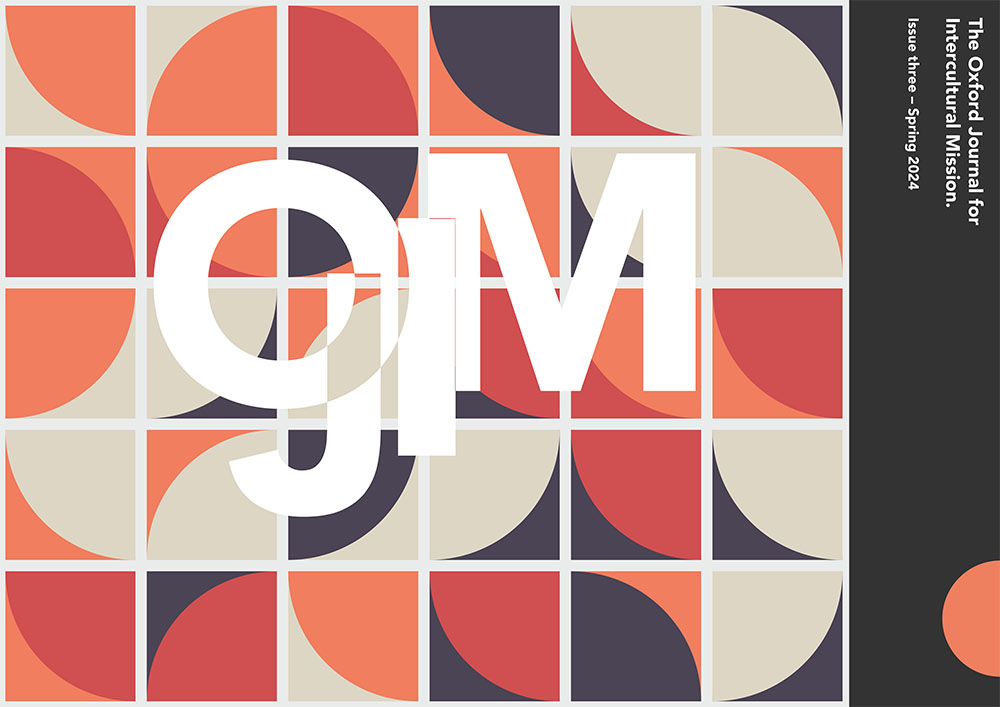In this edition
 This third issue of the Oxford Journal for Intercultural Mission focuses on Black History Month (BHM), observed every October. We take a step back to consider what makes Black History Month important, and what our response to it should be in October and beyond. As it is an annual opportunity for everyone to focus on racial issues locally, nationally and globally, what might our churches plan for Black History Month 2024?
This third issue of the Oxford Journal for Intercultural Mission focuses on Black History Month (BHM), observed every October. We take a step back to consider what makes Black History Month important, and what our response to it should be in October and beyond. As it is an annual opportunity for everyone to focus on racial issues locally, nationally and globally, what might our churches plan for Black History Month 2024?
- Martyn Snow, the Bishop of Leicester, in his article, ‘Seeking an intercultural church for a multicultural world’, describes how the Diocese of Leicester came to see interculturalism and racial justice as a priority, and his hopes for the Church of England more widely to do so as well. He discusses his journey in seeking racial justice and fostering diversity within the Church of England. The article highlights efforts to increase representation, address past injustices, provide training on unconscious bias, and promote interculturalism.
- Naomi Hill, in her article ‘Black history is British history’, examines the relevance of engaging with black British history as a Christian who does not have African heritage. She highlights significant events that can change the way our history is perceived.
- John Root asks, ‘Why do we need Black History Month (BHM)?’ He explores the importance of BHM in celebrating overlooked black history while acknowledging potential pitfalls. He emphasises the need to recognise the stories of pioneers, migrants, and ordinary people in black history, going beyond celebrity worship. The article also stresses the importance of white people learning black history and focusing on what black people truly offer, while avoiding comparisons with white achievements and fostering an integrated society.
- Daniel Odhiambo, writing on ‘Notable black Africans in our redemptive story’, highlights the presence of black Africans in the Bible, shedding light on significant figures such as Moses’ Cushite wife. He emphasises the importance of recognising these individuals as part of the biblical narrative and their contributions to redemptive history.
- Ned Lunn, writing on ‘Improvisation as intercultural practice’, says the term ‘black history’ suggests a singularity rather than what it is: an often-competing set of multiple histories. He argues that the principles of improvisation can help navigate the challenges of telling and hearing conflicting accounts of historical events.
- Peter Tate, writing on ‘Using art to communicate an intercultural Jesus’, advocates using mission as the ‘mother’ of church art and using multiple images to guard against exclusively my-culture Jesus mindsets.
- Israel Oluwole Olofinjana’s article, ‘Black African pastors championing intercultural mission in Liverpool’, reviews how Daniels Ekarte and Dr Tani Omideyi developed their leadership beyond the four walls of the church to become community pastors impacting different ethnic groups in society.
- Godfrey Kesari, in his article, ‘Fighting for racial justice in the church is not an elective’, highlights the persistence of racism in the Church of England, particularly in the contrasting treatment of refugees from different regions. Kesari advocates for education, empathy, and intercultural gatherings to combat racism, stressing the importance of prioritising racial justice and deconstructing racially unjust structures. He concludes with a message of hope, emphasising the inevitability of racial justice and the importance of unity among all people.